Introduction
As we saw in Part 1, in spite of his lack of a formal education Arthur Weigall pursued the role of archaeological excavator, achieving his dream of working in Egypt. Although his initial achievements were minimal, he was promoted to the position of an Inspector in Egypt, a role he took on with energy and dedication. He was fiercely protective of monuments from Luxor to Nubia, often falling into dispute with the authorities and wealthy patrons over the importance of preservation through proper archaeological technique. As an Inspector Weigall travelled extensively during the first seasons and played a pivotal role in preventing further destruction of temples and the pillaging of Egypt’s heritage. In part 2, I will look at more of Weigall’s accomplishments and further investigate how his drive for success, recognition and promotion caused him to make choices that inevitably tarnished the reputation he had worked so hard to build.
1907-1908. The Love of the Desert
Arthur Weigall travelled through the Egyptian Eastern Desert, a terrain unseen and unappreciated by many tourists (figure 1). In the 1907-08 season he would venture into this inhospitable terrain known to the ancients as ‘deshret’ on four separate expeditions. These included the Roman Porphyry Mines at Gebel Dukhan, the Roman Granite Quarries of Mons Claudianus, the Town of Khossair and the Rock Temple of Wadi Abad built for King Seti I. He developed a deep-rooted love for the untouched land and was known to scamper from ruin to ruin copying inscriptions, quite possibly the first to view them since their original authors.
One set of inscriptions, of high-prowed boats with stick men and animals that Weigall recorded near a Temple that Seti I had constructed has recently been cited by David Rohl to suggest a possible foreign origin of prehistoric people in the Euphrates valley (Rohl, 1998). His imaginative and descriptive writing effectively describes the Town of Gebel Dukhan with a ramp ascending to a fine terrace running along the east side. “Passing through the gateway one enters the main street, and the attention is first attracted by a fine imposing building on the right hand side. Here there are several chambers leading to an eight-pillared hall, at the end of which a well made and well preserved plunge bath eloquently tells of the small pleasures of expatriated Roman officers….. ” (Weigall, 1909). This is a town that pictures show as nothing more than broken masonry and an occasional pillar. Weigall’s ability to paint a dramatic picture, carrying his reader to the desert from the comfort of their own home was showcased in a book he published in 1909 on the desert entitled Travels in the Upper Egyptian Desert. In addition to his work in the desert the 1907-08 season would also challenge Weigall when Theodore Davis discovered the tomb of Horemheb (figure 2).
1909-1911. Sir Alan Gardiner
In 1909 Weigall cleared the tomb of Ramose, the Vizier to Akhenaten. After many failed attempts to convince his friend, the eminent, Alan Gardiner to join him in Egypt. Gardiner finally relented when Weigall sent him a letter chiding him that it was no use “smugging away over books in Berlin when the material indispensable for your studies is perishing in Egypt in double quick time”. (Hankey, 2007) Little more convincing was needed and Gardiner met up with Weigall in September of 1909. Weigall and Gardiner solidified a long lasting friendship during this visit. Their objective was to publish the Tombs of the Nobles and in the end they did, although it strained their friendship due to arguments over the wording concerning who had authored it.
But for now the two men reverted to the freedom of adolescence. Prior to starting work at Gurneh they visited Philae (figure 3), swam through the flooded temples at the ancient quarries at Gebel Silsileh, and camped in the tombs of El Kab, drawing and copying inscriptions (figure 4). Both Weigall and Gardiner felt a sense of freedom working with each other, free from the confines of society’s formal structure. It was at this point that Gardiner both encouraged Weigall by telling him that many of his theories were worth publishing, and inadvertently started him on a spiraling descent that would culminate with his leaving Egypt.
Weigall’s slow downfall began in camp one day when Weigall informed Gardiner of a grand plan he had formed. Weigall intended to create “a good list of tombs with the full titles of the owners in hieroglyphs, so that they would be at once identified.’ Gardiner’s response that, “O but that is beyond you” (Hankey, 2007), both shocked and dismayed Weigall. Gardiner’s attempts to clarify his position by relating that few were expert enough to draw or decipher the inscriptions correctly did little to appease Weigall. With that one statement Gardiner had shown that Weigall would never be considered a scholar and that the rigorous Edwardian class system would forever prevent him from achieving more or rising beyond the post he currently held. In his own words one can hear Weigall’s misery when acknowledging this fact to Hortense. He writes to her: ‘He (Gardiner) leaves me with the feeling that I am a decent inspector, a decent common-sensed person, fairly sound on Egyptological things in general, uncommonly well-acquainted with the monuments, likely to be of use as a writer, but quite hopeless as a scientific Egyptologist as far as details of syntax etc go….it is something of a blow to me to find I can never be a scholar’ (Hankey, 2007)
It was around this time that Weigall made yet another discovery, that of the possible tomb of Amenhotep I. The identification of this tomb by Weigall was based solely on the fact that it closely matches the description of the location of Amenhotep’s tomb as reported on the Abbot Papyrus, which has been dated to the reign of Ramesses X.
Discoveries and successfully publishing books that were well received by the public opened a door to Weigall that had previously been closed, leading him into the world of public adoration, which for Weigall was a mixed blessing. Weigall was now not only recognized but sought out by private visitors to Egypt. Even Theodore Roosevelt spent three days with him in March of 1910 touring sites and racing horses. Roosevelt later offered great praise when reviewing Weigalls book, The Treasury of Ancient Egypt in 1910 (figure 5). He recognized Weigall as, “one of the few able to bring history to life.” (Roosevelt, 1912) Weigall struggled with this notoriety and how to remain grounded. Popularity with the public proved to have its downfalls as scholars didn’t recognize his credibility. Weigall felt that his views and opinions were not taken seriously when compared to those of scholars who published scientific material.
During the 1909-11 seasons, Weigall filled in for Chief Inspectors Gustav Lefebvre in Middle Egypt and Campbell Cowan Edgar in the Delta. He essentially became the Chief Inspector for Egypt as a whole. Weigall was concerned with the conditions he observed in his two temporary areas of responsibility. Tombs were filthy, were not being properly preserved, ghaffirs were being treated poorly, thereby increasing the potential risk of dishonesty, and amateur archaeologists were not required to have an expert involved in their excavations. Weigall must have felt great devastation to see that all his initiatives in Middle Egypt were for nothing if the standards were not universally utilized throughout all of Egypt.
Weigall proposed an unorthodox solution, suggesting that Lefebvre and Cowan could be transferred to the Museum in Cairo; after all they were scholars, better suited for research out of the field. Weigall further proposed that he would then be made the Chief Inspector for all of Egypt, only asking for one additional assistant. The plan was never seriously considered by Weigalls superiors. It’s clear that Weigall was feeling “stuck”, in his current position of Chief Inspector. He knew that he could never move up as long as the Director General position was reserved for the French. He believed that scholars were often the worst offenders, not excavating properly and failing to preserve their finds. He pointed out that they often refused to share their finds with others in the field, selfishly holding onto them, something that he himself had never done. He was quick to share that he always invited scholars to work in the monuments he discovered, not claiming personal rights to any of them. Weigall also stated that antiquities of great importance were removed from Egypt without the benefit of prior study. With the Director General’s knowledge, the statue of Menkaura going to the Boston Museum being a prime example. A chief Inspector over all of Egypt was the only answer to prevent these outrages but the plan was never seriously considered by his superiors. Maspero (figure 6) was well aware that allowing an individual this much power could very well threaten his own position, a risk he was unwilling to take.
1911. The beginning of the end
As we have seen in Part 1, Weigall’s childhood indicates evidence that he suffered to a degree from emotional issues. Now, new challenges had arrived. The stresses of being a celebrity to the public, ignored by scholars and the fact that his initiatives for his perceived improvements to the salvaging of Egypt’s fragile history were being countered by Maspero at every turn proved to be too much for him. On September 15th as he returned to work with Gardiner documenting in Gurneh, Weigall suffered from a complete breakdown. He describes it in a letter to Hortense, “I was alone and quite happy, sitting on the plateau looking at the stars. Then suddenly it came: an absolute horror. It was not exactly fear, but just horror.” (Hankey, 2007) A second attack of depression on his return to Luxor after a visit with Hortense in Ramleh would end his hopes that it was just a passing temporary condition. He was forced to apply for sick leave and return to Cairo to work in the museum. He then travelled back to England in January 1912 for eight months of additional leave.
This was not a condition well understood in this time period. It signified weakness and probably supported the opinion of competing scholars that Weigall was not suited for promotion from his current position. Weigall seems never to have truly recovered from this episode. He attempted recovery, diagnosing his illness as agora mania, a fear of open spaces, and even worked with a Doctor Edward Madge to resolve the problem, but true recovery evaded him.
1912 -1913. A return to Cairo
Moving from Luxor to Cairo was a startling change for Weigall. Cairo was much larger, full of shops and social engagements that took much of his time (figure 7). He was receiving only half pay due to being on leave, his articles were rejected for publication and mounting bills weighed on him. He struggled to pay rent on a house Hortense had rented for herself and their children and bill collectors were constantly seeking him out for repayment of debts. He succumbed to the temptation of going against his own principles, purchasing a head of Akhenaten from a shop and selling it to a private American millionaire, Edward Tuck, for £150 more than he had purchased it for, paying off two creditors but also selling his integrity in the process.
Weigall did resist other opportunities to deal in antiquities, but the damage was already done. The final blow to his career came in November of 1912, in the form of a bronze Roman period statuette. The bronze was part of a collection from Turkey that was being smuggled into Egypt to be sold by a local dealer. The dealer, fearing that Weigall would claim one of the finer pieces, bribed an Egyptian clerk in the Inspector’s office to hide it but when he returned found the clerk had sold it. The dealer then went to Weigall to report the scheme and eventually it was recovered by Weigall from an Italian dealer. The recovered statuette was indeed unique and Weigall did the proper thing in offering it to Maspero to purchase for the museum. Maspero decided that it was not a wise investment for the department to make on the grounds that it did not represent Egyptian heritage. Rattigan, Storrs and Weigall then purchased the statue for £800 with the intention of selling it at a high profit to American Steel Tycoon and President of the Metropolitan Museum, Pierpont Morgan. Morgan died in 1913 never having purchased it and much later the final sale fell short of expectations selling to an anonymous collector at an undisclosed price.
Weigall had made every attempt to conceal his having been involved in the purchase, even writing a contradiction requested by his boss Malcolm Macdonald. By 1913 the story was the talk of social and professional circles, though it would be drastically different from the truth. The most damaging difference being that it had Weigall and Rattigan working together to steal an Egyptian statue.
The resulting damage to Weigall’s reputation was priceless to the enemies he had made. In 1912 one of Weigall’s final ideas was to make the Cairo Museum Egypt’s largest dealer of antiquities (figure 8 ). The plan involved the sale of surplus important antiquities to public museums or large collections only, with duplicate or low-value antiquities that the museum had in storage offered for sale to private collectors and tourists. His thinking was that this would put an end to foreign museums illegally buying important pieces from dealers. The resulting profits would be given to the Cairo Museum and a portion could then be used to buy valuable pieces from dealers so they would be secured for the Cairo Museum. Of course an experienced individual was needed to determine which pieces were valuable to the museum and Weigall proposed himself for this position.
In his plan, the half and half division policy, whereby excavators retained half the objects of an excavation and Egypt retained the rest, would remain, but a fair and equal division would be enforced, something of which Maspero had been very lenient. It would be an actual division of value, and unimportant objects would be catalogued, photographed and then sold below the prices that dealers were charging for similar items. Maspero was against the plan. Without the added incentives he currently had the ability to offer them, it would severely limit his ability to entice both private individuals and museums to excavate. Weigall, now in Cairo and communicating his ideas and plans with British advisors, was an additional irritation to Maspero. Maspero’s solution was to offer Weigall the job of curator at the Cairo Museum, a post being vacated by Emile Brugschs. The plan was for Weigall to take over from Brugschs at the time of Brugschs’s planned retirement. Unfortunately for Weigall, the Turkish statuette scandal became public knowledge and it was no longer an option for Maspero to offer Weigall the senior position at the Museum.
Amidst the scandal going on around him, Weigall amazingly retained his focus on preserving the artifacts so important to him. He lobbied for and succeeded in creating an additional Inspector position specifically for the Tombs of the Nobles in Gurneh. He also completed a controversial biography on Cleopatra in 1913.
1914
In 1914 Weigall devised a final project, just months before leaving Egypt. He proposed an idea for a privately funded organization, an Institute of Archaeology with offices in London and Cairo that would essentially train new students under current archeologists. The most innovative part of his plan was that it included training Egyptian natives as Egyptologists. This is where his previous theory that modern Egyptians mirrored their ancient counterparts tied in. In Weigall’s view, if you had modern Egyptians excavating they would be far better than foreigners at evaluating what was being discovered and more knowledge could be gained from this interpretation of the artifacts when found and studied in their natural surroundings.
It was, in many ways, an uncontroversial idea. The organization would not have been a threat to the Department of Antiquities because its primary focus was not actual excavation but rather the creation of qualified excavators using modern techniques. A benefit that Weigall didn’t express but surely had to be in his thoughts, was that the organization could also be instrumental in pushing through the reforms that Maspero had blocked in the Department of Antiquities. His idea received a great deal of attention and support. The great archaeologist Sir William Flinders Petrie went so far as agreeing to allow the organization to use his name. But like so many of Weigalls proposed initiatives politics within existing governmental departments ended it before it had the chance to start.
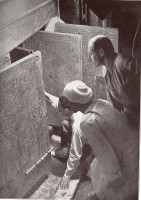
Figure 9. The moment when Howard Carter opens the tomb. One of Harry Burton's excellent photographs.
On April 5th, 1914 Weigall left Egypt and his administrative duties for good. Popular opinion throughout the archaeological world at the time was that he left disgraced by the scandal. No official government account condemns him for any activities he undertook while in Egypt. I believe he just reached far too many roadblocks to his proposed reforms to progress. He had Hortense and their children waiting for him in England. He was active in all forms of artistic expression as a playwright, novelist and film critic. Weigall would of course return to Egypt to cover Howard Carter’s discovery of Tutankhamen’s tomb for the Daily Mail in 1923, becoming active in his protest of the exclusive deal that Lord Carnarvon signed with the London Times (figure 9). He is perhaps best remembered for a statement that he made when Carnarvon was laughing and joking as he went down into the tomb the day the burial chamber doorway was opened. Weigall remarked, “If he goes down in that spirit, I give him six weeks to live.”(Reeves, 1990) Not much more than six weeks passed and the Earl was dead from pneumonia, a complication from an infection caused by a mosquito bite. It’s unfortunate that this statement would come to define Arthur Weigall, when there is so much more that he should be remembered for.
Arthur Weigall gave far more to Egyptology than popular history recounts (figure 10). It’s difficult to predict with any degree of certainty the contributions that he could have continued to make to Egyptology had he been allowed to carry out many of the initiatives that were blocked by Maspero. Arthur Weigall was as human as the next man, and he made some errors in judgment that were used by competing archaeologists to discredit him. One of those who discredited him was Howard Carter, who was not above selling antiquities for personal profit.
Weigall’s mistakes do not diminish the contributions he made to the preservation of monuments throughout Egypt. Nor were they an excuse for the officials in power at the time to ignore many of his proposed initiatives that, if implemented, might have preserved more artifacts for future generations to study. The loss of even one artifact is a loss to all of society for the potential knowledge it could have brought us.
Conclusion
Arthur Weigall understood that change was essential to protect the fragile history of Egypt, sometimes from the very people put in place to protect it. We can see traces of Weigall’s influence in many of the rules governing excavations in Egypt today. I believe this would make Arthur Weigall proud. He was never given the satisfaction of being called a scholar by his peers, but he responded to the voices from history that urged him to protect the remains of their great civilization. To those past people he was something far more important than a scholar: he was a guardian, protecting for all of posterity the hopes and dreams preserved in the monuments that our predecessors built.
Image Credits
Figure 1, Egyptian Desert, GNU Free Documentation License, Credit for photograph attributed to Katonams.
Figure 2, Horemheb tomb entrance with Weigall, Public Domain, Copyright expired.
Figure 3, Temple of Philae, Creative Commons Atrribution License. Photograph attributed to Blueshade
Figure 4, El Kab Temple, GNU Free Documentation License, Photograph attributed to Bubuka.
Figure 5, The Treasury of Ancient Egypt, scanned front cover
Figure 6, Gaston Maspero, Public Domain, Life of the author plus 70 years.
Figure 7, Cairo Postcard, Public Domain, First Published prior to 1923, Copyright expired.
Figure 8, The Egyptian Museum, Creative Commons attribution license, Photograph attributed to BsOu10e01.
Figure 9, The Discovery of the Tomb of Tutankhamun, Public Domain, Copyright expired.
Figure 10, Arthur Weigall, Public Domain, Life of the author plus 70 years.
Bibliography
Hankey, J., 2001, A Passion for Egypt, Taurus Parke Paperbacks
Hawass, Z., 2005, Tutankhamen and the Golden Age of the Pharaohs, National Geographic Society
Reeves, N., 1990, The Complete Tutankhamen, Thames and Hudson Ltd, London
Romer, J., 1981, Valley of the Kings, Castle Books
Weigall, A., 1909, Travel in the Upper Egyptian Deserts, William Blackwood and Sons
Weigall, A., 1910, The Life and Times of Akhnaton, Thornton Butterworth Limited
Weigall, A., 1913, The Treasury of Ancient Egypt, Rand McNally & Company
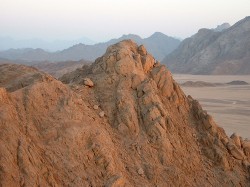
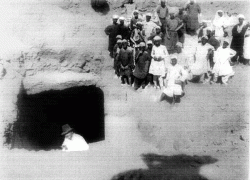
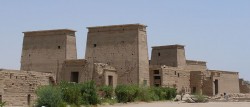
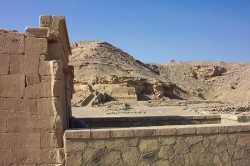
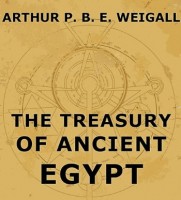
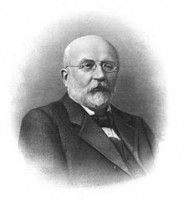
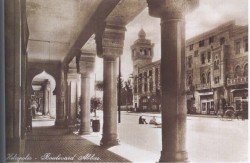
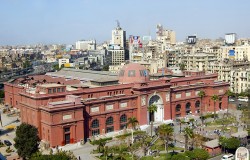
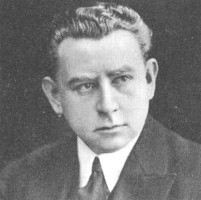
 By
By